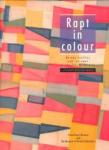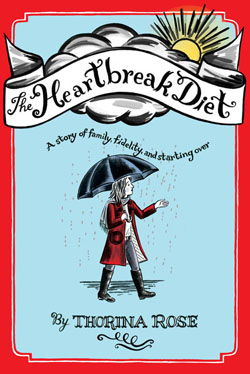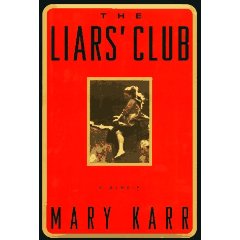August 26, 2008
Rapt in Colour

I guess it's appropriate in the last days of summer that it's a time of transition for many of the closest people in my life. I'm feeling melancholy about it all, that plus the unusually gorgeous August in New York and the epic terrible's my eldest seems to be going through equals a long spell of blogger's block. My sister who lived ten minutes away in Park Slope moved to the upper east side yesterday, which in New York geography feels the same as moving from France to Italy... One of my closest mom friends is going back to a day job full-time... and my terrible/beautiful three year old will be at school every day this Fall.
In any case, I had a chance to peek at my sister's new apt before she moved in so we could talk about colour. We're big fans of colour here at Casa G., and paint walls any chance we have though ironically in our current loft space we weren't able to at all. One of my favorite references for colour are pojagi's, the beautiful wrapping cloths Korean women made from scraps. I have a nice collection of vintage hanboks that I use occasionally to make my own pojagi's as well as new hanbok fabric from Korea (for those interested I can direct you to the best stalls at Namdaemun market for traditional fabric and notions!) and I am always always inspired by the book Rapt in Colour.
Some of the things that amaze me about the antique pojagi's is how they are modernist, evoking Mondrian, way before modernism existed. The palette also amazes me because I'd so long associated Korean colours with bright saturated neons or crazy fur blanket colour combo's which most households seemed to throw together easily with the earthy dark woods of traditionally designed furniture, etc. Pre-industrialism, the cultural colour palette seems to me, perfect.
And on that note, color seems to be the perfect way to welcome the fall. It's the flip side to all the changes, the parts I am looking forward to - finding more ways to be in the city that I love and show up at my sister's, the freed time I'll have with my #1 at school, and so forth.
July 14, 2008
I heart Illustrators

Who knew they were so great?!
Last Tuesday we hosted an after-party for our dear friend Thorina and her new book, The Heartbreak Diet. She's an illustrator turned graphic novelist and we couldn't be more proud of her beautiful, easy to read but intense new book. Like Persepolis, the book is a fast-read, intense but immediately accessible - the perfect summer read. In any case, we had the fortune of meeting several of her illustrator friends, most of whom are here in Brooklyn, and it was party kismet - everyone was so down-to-earth, smart and engaging with none of that artist weirdness that can happen at gallery events or other such related parties.
James Yang besides being known as Illustrator Extraordinaire is the first KA I've met from Oklahoma. (I wouldn't have known having had assessed him as Chinese in my mind - am I the only oddball that does that? categorize Asians?) And give him time enough, that accent does slip out... We're waiting for our very own copy of his new book as I write...

And lastly and totally unrelated except that she is an author, I just finished The Liar's Club for the second time, and even though it's been a few days I can't get her voice out of my head. If anyone hasn't read this amazing memoir you can get cheap copies on half.com - it's one of those books you can't put down. I was trying to read it again without getting sucked in (part of my casual ongoing discussion with my friend, who just happens to be the best writing teacher in all of New York, about the blurring distinctions between non-fiction and fiction) but it got me. Again.

May 11, 2008
Unaccustomed earth
"Human nature will not flourish, any more than a potato, if it be planted and replanted, for too long a series of generations, in the same worn-out soil. My children have had other birthplaces, and, so far as their fortunes may be within my control, shall strike their roots into unaccustomed earth."
- Nathaniel Hawthorne, "The Custom-House"
(From the forward to Jhumpa Lahiri's new book)
February 2, 2008
Kobong

In her book Things Korean, O-Young Lee writes about a traditional measuring cup called the kobong. Used to measure grain, especially rice which was a main form of currency for much of Korean history, she writes:
Kobong is a concept which has no one-word equivalent in other languages... It means heaping the measuring cup till it overflows, and even then some.... To provide a some idea of how high it is heaped, a dishonest measure in Korea is one where the grain is heaped to overflowing only twice, not three or four times. If it is not absolutely spilling over, that is being pretty stingy. p.14
In other words, the kobong was not a measure of scientific accuracy, but of inaccuracy. And it's importance was not so much the grain itself but what it meant relationally.
I love this because Koreans aren't anything if not relationship oriented. And I love that once, in our highly ordered Confucian culture, even the smallest objects had a place and it's purpose too was relational.
On the flip side, I think this is what was especially hard for Korean immigrants to the US. To come from the highly ordered to the un-ordered, and because meaning itself was found in the order, for many, meaning itself was destroyed.
I am thinking of someone, of course, as I write this. An uncle here, another there but in general of all the Korean men who moved here and found themselves as grocers and dry cleaners and janitors despite their educations and degrees, and slowly lost themselves to their invisible places as non-Americans. For them, I wish kobong.